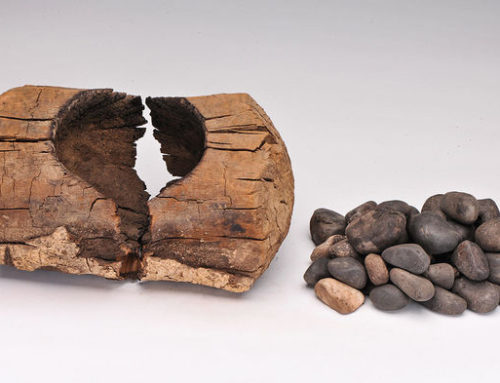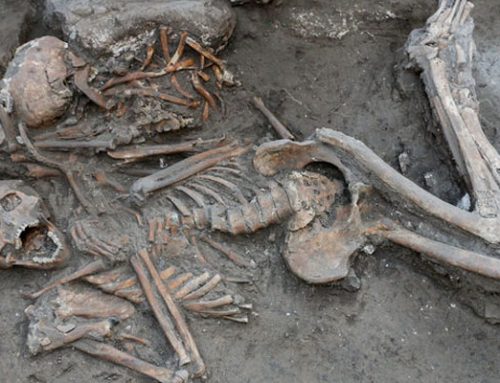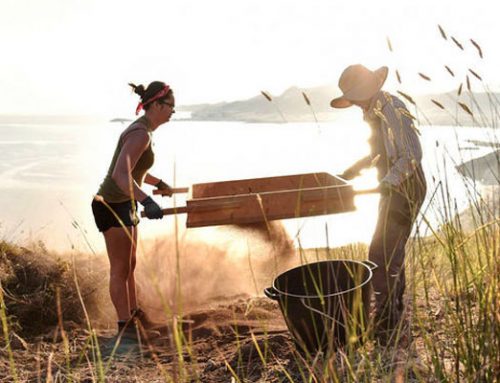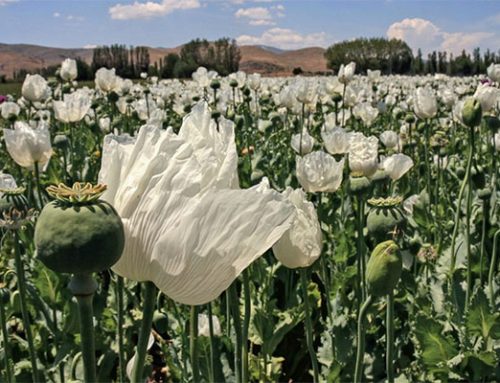Omani soil is providing a bevy of archaeological surprises, but researchers there also struggle with rapid development and a lack of homegrown expertise
MUSCAT, OMAN—Until 1970, Oman rivaled Tibet as one of the world’s most inaccessible countries. Even the renowned British explorer Wilfred Thesiger, who spoke fl uent Arabic and traveled on camel with Bedouins, was barred from the country 20 years earlier. Few nations on Earth have changed so dramatically since. The sultanate, run by the monarch Qaboos bin Said for the past 40 years, now welcomes not only investors eager to benefi t from the country’s oil revenues but also archaeologists seeking to study everything from medieval forts to evidence of early oceangoing ships.
A dozen foreign teams are at work in this boomerang-shaped nation, which was a surprisingly sophisticated player in global trade 4000 years ago and also the center of the incense trade (see sidebar, p. 1099). Researchers are taking advantage of a stable political system, generous help from the central government, and a landscape that until recently was remarkably unmarred by modern development. “Here all is visible and untouched; you can fi nd 5th and 4th millennium B.C.E. sites everywhere,” marvels Maurizio Cattani, a Paris-based archaeologist and dig director at R’as al Hadd on the country’s east coast. “The whole country from north to south is full of archaeological remains,” agrees Hassan Mohammad Ali al-Lawati, Oman’s director general of archaeology and museums at the Ministry of Culture. “We call ourselves a virgin country.”
Yet the quickening pace of development threatens many sites, and local champions of archaeology are few and politically vulnerable. “We don’t want to be called antidevelopment,” al-Lawati says during an interview in his Muscat offi ce.
All the same, Oman today is an oasis of Arabian archaeological research. Wary of outsiders, its larger neighbor Saudi Arabia, with which Oman shares a long border and large oil reserves, grants few excavation permits to foreigners, although that country has its own cadre of domestic archaeologists. Meanwhile, political troubles restrict excavations in countries from Yemen to Iran. The United Arab Emirates welcomes archaeologists, but its borders are limited largely to the Persian Gulf shore. Oman, by contrast, not only is vast and archaeologically diverse but also helps foreign teams fi nancially. “We provide logistical support, accommodations in Muscat, workers, cars, petrol, and labor” to supplement funds provided by outside teams, says Biubwa Ali Al-Sabri, who heads the excavation and archaeological department at the ministry. She says that interest in excavating in Oman has increased dramatically since the 1980s.
But development has also increased dramatically since that time. New highways, urban sprawl, copper mining, and beach resorts are the primary threats. Al-Lawati says his ministry, which oversees archaeology, is in a delicate position. “We need schools and roads. And at the same time, we don’t want to be soft and spoil our archaeological heritage. But there are a lot of stakeholders.”
Those stakeholders include a host of influential members of the government. Several are building seaside villas on a dramatic cape called R’as al Hamra, just a short drive from al-Lawati’s office at the Ministry of Culture’s headquarters in Muscat. A large new home is rising there on a 5th millennium B.C.E. village that provided the country’s earliest evidence of copper, Oman’s signature export. In the surrounding few hectares, 10 of 12 prehistoric sites have been destroyed in recent years. One of the surviving sites bordered a mangrove swamp and was diffi cult to develop; the second was slated to be part of a luxury-home community until Italian archaeologists made a media fuss that stopped the project in 2005.
On that site—now perched next to a luxury hotel—a team led by Lapo Marcucci of the Italian archaeological mission in Oman found 120 graves, nine phases of occupation, and important insights into the transition from a hunter-gathering culture to the more sophisticated Haf it culture that emerged at the end of the 4th millennium B.C.E. This and the other remaining site, which dates from 1000 years earlier, may soon form the nucleus of an innovative archaeological park proposed by a team of Italian architects and landscape designers. Al-Lawati says he hopes to win government approval this year to spend $1.3 million on the first phase of the project. And he cites other successes, such as preventing construction of a copper mine that would have destroyed several prehistoric settlements and ensuring that a new highway from Muscat to Sur avoided archaeological sites, even at the cost of millions of dollars and months of construction time.
Such efforts are hampered in part by the lack of homegrown archaeologists. The university in Muscat, the country’s leading academic institution, closed its archaeology degree program decades ago and now offers only the occasional course. Those interested in pursuing degrees must go abroad. Two Omani archaeology teams are at work, but their efforts are dwarfed by those of foreign groups. “We are trying to put together a plan with the Ministry of Education” to reestablish a program, al-Lawati says.
One foreign scientist, who requested anonymity, says archaeology in Oman suffers from a tradition of ministries run like fiefdoms, limiting cooperation. With its relatively small budget and political pull, the Ministry of Culture is among the least infl uential parts of the government. “We always get the smallest share,” al-Lawati acknowledges. But he is also confi dent that new rules requiring archaeological surveys before construction, along with the introduction of archaeological parks, will boost awareness of the country’s rich past. A dose of national pride may help as well. “We once had an important civilization,” says Al-Sabri. “And we need to know more.”
–ANDREW LAWLER
Hot on the Incense Trail
SALALAH, OMAN—A cool mist hangs over the Dhofar Mountains close to the Yemen border, turning bare hillsides an Englishmeadow green as the rest of Arabia swelters in the summer heat. It is this moisture, the only fi nger of the Asian monsoon to touch the peninsula, that makes these mountains the perfect habitat for the scraggly frankincense tree, which oozes a gooey and aromatic resin when cut. The tree grows only in this Dhofar region of Oman, its likely ancestral home, and parts of Yemen and Somalia.
 |
| Digging deep. Dhofar’s deputy governor, Sheikh Suhaiyl Musallam al-Rojdi (left) examines dig by McCorriston’s team. |
Frankincense was the ancient world’s most lucrative product, essential in temple rituals throughout the Mediterranean and Southwest Asia, prescribed by doctors for digestive problems, and turned to ash for eyeliner among Egyptian gentry. Yet the origin of its trade remains only dimly understood, in part because the mostly nomadic inhabitants here closely guarded their secret and left few artifacts and no texts behind. Researchers long assumed that the frankincense trade did not flourish until 1000 B.C.E. or later. But a country now welcoming archaeologists is providing an unusual combination of textual evidence, remote sensing data, and careful excavations (see main text, p. 1098). The data suggest that the trade sprang up far earlier, says archaeologist Juris Zarins, who lives in Dhofar’s sleepy provincial capital, Salalah.
According to Zarins, long-distance trade itself—in seashells— began here as early as the 5th or 6th millennium B.C.E. Then, far to the northeast at R’as al Jinz, Italian excavators found what appears to be a frankincense burner dating to about 2200 B.C.E. Resins from Egyptian tombs date to about this time and may signal maritime connections across the Red Sea. For overland travel, donkeys, which by this period were in use, may have made the journey north. And Mesopotamian texts from this same era mention a trade in “aromatics,” likely frankincense.
By the height of the Umm an-Nar period at the end of the 3rd millennium B.C.E., when Indus goods were arriving in Arabia and Omani copper was being shipped to Mesopotamia, distant Dhofar and its frankincense seem to have been part of the fi rst international trade system (see p. 1092). “There’s abundant evidence of goods exchange,” says Joy McCorriston of Ohio State University in Columbus. She and her colleagues are mapping thousands of uncataloged tombs in the region to gather data on population and trade routes.
 |
| Precious resin. Incense was made from the frankincense tree and burned as early as 2200 B.C.E. (inset). |
Both teams are fi nding evidence that Dhofar’s frankincense made it a player in the early economic network. But even as that origin comes to light, the 4-millennia-old tradition is nearing its end. The stalls of Salalah today are still fi lled with bags of frankincense. But buyer beware. “Now it all comes from Somalia,” says Zarins.




